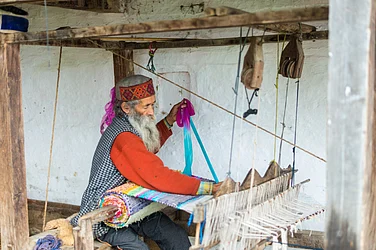Engaged in a confrontation on its eastern border, the Indian Army is facing a major challenge to modernise its ranks. There are concerns about the ‘Atmanirbhar’ scheme adversely affecting the Army’s procurements. Lt General Shantanu Dayal, Deputy Chief of Army Staff (Capability Development and Sustenance), spoke to Ashutosh Bhardwaj about the Army’s plans. Here are edited excerpts:
What are your modernisation plans?
The Indian Army’s modernisation plan is based on the development of critical combat capabilities and overcoming obsolescence in core capacities. The incorporation of drones, remotely piloted aircraft, radars, counter-drones and satellite imagery has improved the lethality and accuracy of operations. A large number of capital contracts and fast-track procurements worth Rs 47,000 crore from Indian industry were concluded in 2021–22.
One hears that the ‘Make in India’ initiative has adversely affected the procurement of defence equipment.
The ‘Atmanirbhar’ vision has empowered the Army to procure diverse equipment and technologies through indigenous sources. The capital procurement pattern of the Army is inherently aligned with the ‘Make in India’ initiative. Of the capital acquisition contracts worth approximately Rs 90,000 crore in the last three financial years, approximately 83 per cent have been signed with Indian industry. The acceptance of necessity (AoN) obtained in the year 2021–22 worth Rs 40,000 crore went to domestic industries. The quantum of contracts that went to domestic units in the last three years has been the highest ever.
The positive indigenisation lists—released by the Ministry of Defence mandating that the armed forces will procure the listed items only from domestic manufacturers—have defined the focus area for the Indian defence industry. The industry has started evolving a dedicated defence vertical. The Army has processed 256 industry licences and 366 export licences in the last three years to boost defence production. I am confident that the Indian industry can deliver the most modern defence equipment to the Army.
What are the next-generation platforms, assets and technologies the Army is working on?
We are inducting multiple and diverse platforms and technologies in several areas. Infantry: a new generation of small arms, protection gear, night enablement of all weapons and enhanced surveillance capabilities. Mechanised forces: upgrade of existing fleet, enhanced night enablement, intelligence surveillance and reconnaissance (ISR), new generation of missiles and ammunition with increased depth of penetration and future-ready platforms. Artillery: Long-range vectors including missiles, rockets and smart munitions, recce platforms, integrated surveillance and target acquisition capabilities. Army Air Defence: Short- and medium-range surface-to-air missiles, shift from guns to missiles, better aerial targeting and counter-drone capabilities, modern fire control radars. Engineers: A new family of mines and bridges.
What is your preparedness for the new and disruptive technologies and warfare domains such as cyber, 5G, AI and Quantum?
Technologies like AI, machine learning, quantum, blockchain and 5G have vast potential in modern warfare. These niche technologies aid military decision-making, minimise human casualties and enhance combat efficiency. The Army has infused autonomous weapon systems, which would become force multipliers in future wars and be the fulcrum around which big data will be turned into actionable intelligence and bring a decision advantage. In collaboration with academia, especially IITs and MSMEs, the Army is pursuing numerous projects in the field of AI, autonomous lethal weapons, cyber, electronic surveillance, language translation and threat modelling. In quantum key distribution, India is among the few countries to have achieved a range of 119 km in a single hop. We have also established training sites for various niche technologies like AI and 5G. These modern technologies can catapult the Indian Army into a modern and futuristic force.
What are the Army’s procurement, development and utilisation plans for drone systems crucial for modern warfare?
The Army has adopted a multi-pronged approach to develop its drone capability. A large number of drones and counter-drone systems have been procured, especially for the northern borders, besides the related capabilities like ISR, loitering and swarming. A variety of RPAS (remotely piloted aircraft system)/ UAV/drones are being procured.
These procurements will provide greater visibility and surveillance capabilities to ground troops even in high-altitude areas. Long endurance aerial surveillance platforms and minefield/IED detection drones are being developed through Innovations For Defence Excellence (iDEX) programme. We have formed contracts for Swarm Drones, which are in the advanced stages of delivery.
How do you assess the capabilities of Indian industry? Can they meet the Make in India target?
The Indian defence industry has the potential to emerge as a serious competitor to global defence companies. To encourage indigenous capabilities, the Army has been interacting with many industries, MSMEs, startups and incubation centres. It has helped us in assessing indigenous capabilities and enabled the industry to understand our operational requirements.
We would like the industry to develop consortiums and conglomerates of major military platforms like aircraft, tanks, submarines and guns. We also expect greater R&D by public and private sectors for enhancing the quality and lowering the cost of military equipment.
What are your plans to equip soldiers with the latest gadgets and enable their net-centricity? With fast evolving technologies, the weapon systems from small arms to the main battle tanks and artillery are becoming outdated soon.
The solider has always been our primary focus. We have equipped him with a family of new-generation small arms, protection gears, night-enabled weapons and enhanced surveillance capabilities. The frontline Infantry has been equipped with arms like Sig Sauer, while others will be equipped with the indigenously manufactured AK-203. In addition, each Infantry weapon system will be equipped with the latest sights to increase its accuracy and other force multipliers like drones and counter-drone equipment.
To achieve greater ranges, the complete inventory of Artillery is being incrementally mediumised (the calibre of all guns is being standardised to 155 mm). The induction of K-9 Vajra, Sharang Guns, Dhanush Guns, ultralight howitzer and advance towed artillery guns paved the way for this transformation. The Artillery now has the ability to target the enemy at greater depth and accuracy by using the Brahmos missiles and the indigenous Pinaka Rocket System.
The capability of the Army Aviation has also increased exponentially in the last few years with the induction of advanced light helicopter (ALH) MK-III and IV platforms, advanced light helicopter (weapon system integrated) and light combat helicopters and Apache helicopters. It will mostly fulfill the requirement of the Army in the utility helicopter and attack helicopter streams. The requirement of reconnaissance and observation helicopters will be incrementally met with the induction of light utility helicopter beginning with 2023.
How do you see the collaboration with foreign original equipment manufacturers (OEMs)?
The Indian industry has already attained a high measure of ‘atmanirbharta’ (self-reliance). However, when the equipment is required quickly, Indian industry can collaborate with foreign OEMs, especially in the critical technology domain. The Indian defence industry has the potential to evolve as a global manufacturing hub in a decade.


























